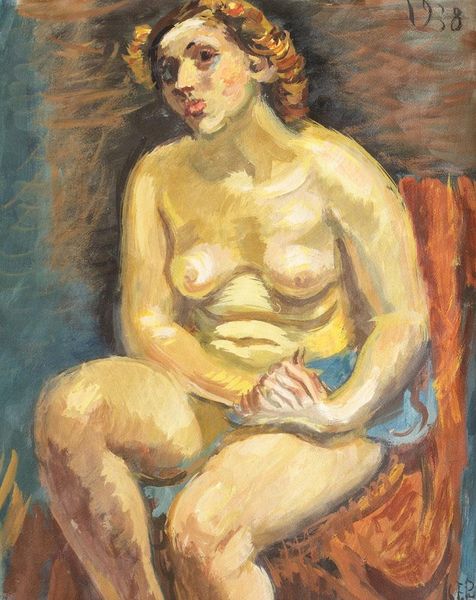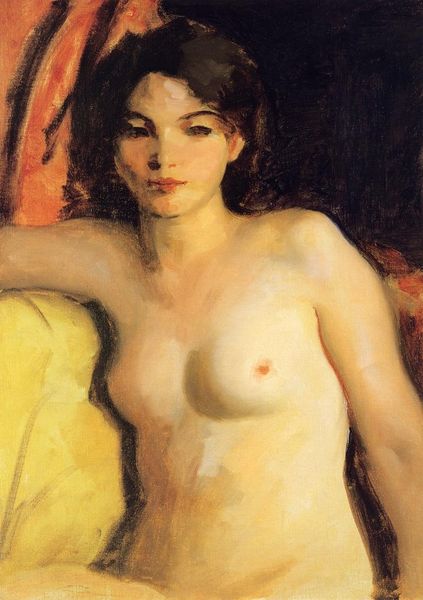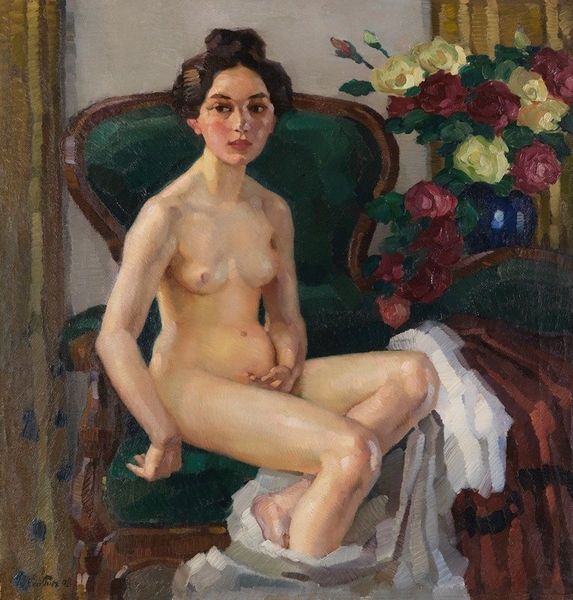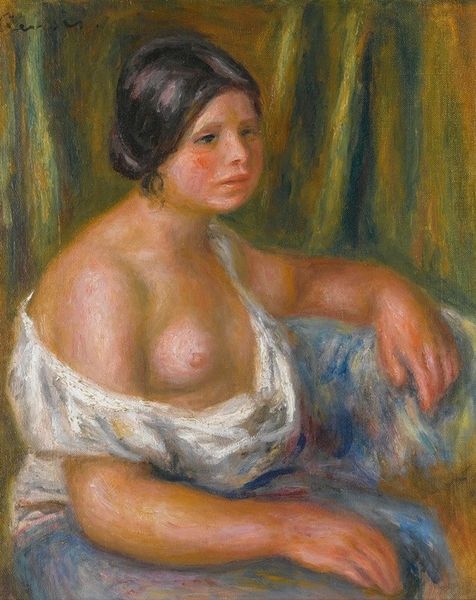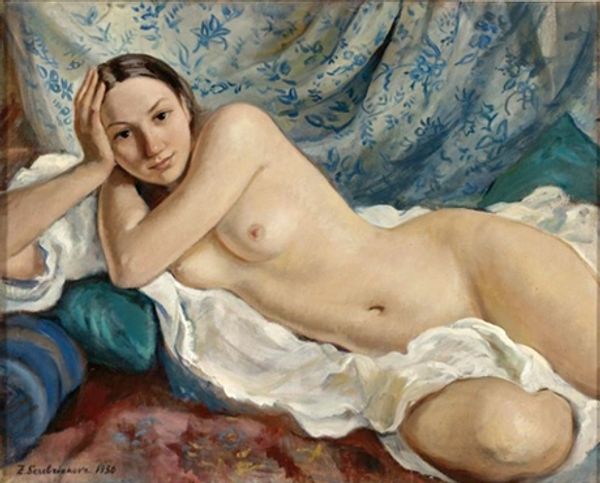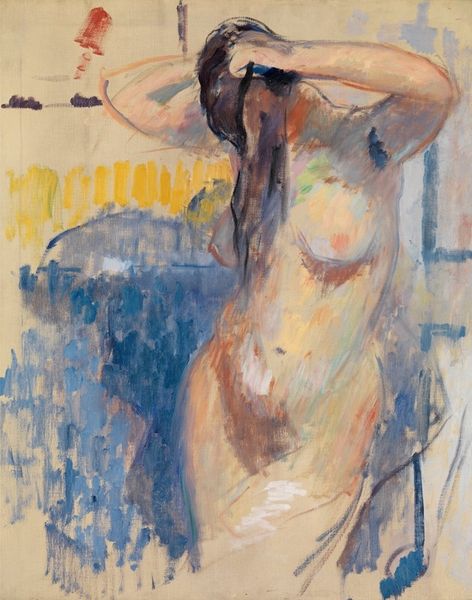
Copyright: Public domain
Curator: Standing before us, we have Robert Henri’s “Zara Levy, Nude,” dating back to 1923. Henri was, of course, a leading figure in the Ashcan School movement, known for depicting everyday life. Editor: The color palette, almost entirely muted with gentle washes of color and light… she looks contemplative, almost melancholic, despite being the focus of the piece. The brushstrokes are visible, lending a sense of immediacy. I see so much romanticism. Curator: Absolutely. It's worth noting how the cultural obsession with the exotic is woven in with the soft application of oil paint, which allows him to gently depict the subject. Editor: It certainly reveals a complex set of class and social expectations. I’m also captivated by the details that could’ve gone unnoticed – the turban, for example, or the light-catching gold hoops that accentuate her face, alluding to the social norms around a sitter being a women on display for both art creation and spectatorship. Curator: Yes, the way Henri employs oil paint is instrumental. It’s quite fluid. Note how he contrasts her flesh tones with the backdrop, thus highlighting the materiality itself. There is something unsettling in it all. Editor: Indeed. The sitter, presented nude, holds our gaze. Consider, too, the museum's and art world's historical role in shaping these ideals of beauty, perpetuating certain forms through this painting but, in some way, exposing the mechanism by making visible brushstrokes and muted colors. It certainly provokes questions about representation. Curator: I completely agree. It highlights how artists use raw material like paint to make something. That visible process contributes significantly to understanding art's purpose and how its reception depends on these complex relationships. Editor: Analyzing Henri’s “Zara Levy, Nude,” really drives us to look more closely at art. Curator: Definitely; Henri forces us to ask deeper questions regarding material’s role, process, and also our shared, socially constructed perception of things.
Comments
No comments
Be the first to comment and join the conversation on the ultimate creative platform.



